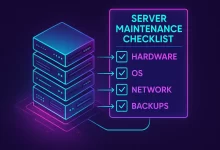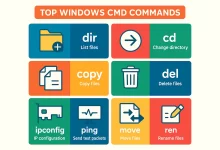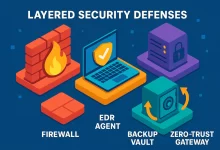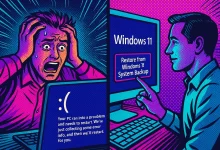
I’m gonna be real—I learned RAID Levels Explained the hard way. Years back, one of my drives died mid-deadline, leaving a half-finished video project in limbo and me stress-eating cold pizza at 3 a.m. That disaster pushed me down the rabbit hole of striping, mirroring, and parity math. Today I’m sharing everything I wish I’d known, so you can dodge that same late-night panic. RAID Levels RAID 0 RAID 1 RAID 5 RAID 6 RAID 10 RAID 50 RAID 60 Description Striping Mirroring Striping with parity Striping with double parity Mirroring and striping Striping and distributed parity Striping and double parity Minimum Disks 2 2 3 4 4 6 8 Read Performance High High High High High High High Write...

Server maintenance checklist—three little words that decide whether your weekend is spent sipping cold brew or firefighting a 3 a.m. outage. I learned that lesson the hard way when a rogue power supply fried half a rack and my pager went berserk. Ever since, I’ve lived by an obsessive, ever-growing list of sanity-saving tasks. Today, I’m sharing the beefed-up version: 25 epic steps split across hardware, software, security, and everything between. Hardware Health First Your servers are glorified space heaters unless you treat the metal right. My server maintenance checklist starts with: Dust & airflow patrol: Crack the chassis, blast out lint, confirm every fan spins like a fidget spinner. Power sanity: Verify dual PSUs have no alarming voltage deltas;...

Look, I’ll be straight with you—I cleared every dungeon Blizzard threw at us last season, swore I’d take a breather, and then Diablo 4 Season 9 dropped its fiery bombshell trailer. Ten minutes later I was back in Sanctuary, coffee mug in one hand, controller in the other, grinning like a kid on launch night. If that sounds familiar, buckle up: today we’re diving deep into everything Diablo 4 Season 9 brings to the table and exactly how to twist those new systems to your advantage. Before we tear into the juicy stuff, quick PSA: if you ever rage‑quit because your Switch went dark mid‑run, my pal over at FoxDooTech wrote a killer fix—check the Nintendo Switch 2 black‑screen quick‑reset guide—it saved...

Ever spent Saturday night elbow-deep in WooCommerce settings, praying the default layered nav would just… work? Been there, friend. Back when I freelanced e-com builds, a client selling refurbished excavators wanted visitors to filter by brand, manufacture year, and—get this—engine hours. Existing plugins choked. So I rolled my own WooCommerce Product Filter. Twelve hacks later, conversions jumped 27 % and my coffee budget doubled. ☕️ Let’s dive in so you can steal every trick. Why Off-the-Shelf Filters Aren’t Enough Stock widgets handle category or price. The moment you toss Brand or Working Hour into the mix, they wobble. A custom WooCommerce Product Filter unlocks laser-targeted faceted search, fewer clicks, and way happier shoppers. Map Your Filter Strategy First Data check...

I still remember my first Photoshop Skin Whitening disaster—fresh outta college, I cranked the Curves layer so high my model looked like a glow-in-the-dark mannequin. My art director laughed so hard coffee shot out of his nose. Never again. After a decade of retouching gigs—from Instagram campaigns to glossy billboard spreads—I’ve honed a rock-solid workflow that brightens skin naturally, keeps pores intact, and never crosses the line into ghost-town. This mega-guide packs over 2,000 words of practical tips, code snippets, and pro anecdotes so you can master Photoshop Skin Whitening once and for all. Skin-Tone Science 101 Before we dive into juicy sliders, let’s geek out—just a little—about why human skin reacts the way it does under pixels and photons. Melanin...

True story: a friend’s side-hustle SaaS went down at 3 a.m. because his lone production database crashed. He had “manual” dumps sitting on a laptop that was—of course—at home. Ever since helping him piece things back together, I’ve been borderline fanatical about Automated MySQL Backup. In this mega-guide I’ll show you exactly how to go from nothing to bullet-proof nightly backups—and all the neat tricks I’ve picked up while running ops for unruly startups. 1 – The Backup Mindset Backups aren’t exciting—until they save you. Remember the 3-2-1 rule: three copies, on two different media, one off-site. Automated MySQL Backup is the backbone of that strategy because it removes human forgetfulness from the equation. 2 – Cron 101 (and 201) Cron...

Windows CMD Commands: Your Swiss-Army Terminal in 2025 Windows CMD commands saved my bacon last month. Picture this: 2 a.m., production website wheezing, and all the fancy GUI tools refusing to launch. I cracked open cmd.exe, fired off ipconfig /flushdns, and—boom—traffic flowed again. Five lines later the on-call pager stopped screaming, and I grabbed a cold slice of pizza in victory. That night reminded me why these 100 time-tested commands still matter. Why Windows CMD commands Still Rock in 2025 Speed over clicks. Type, hit ↵, done. No spinning wheels, no “Not Responding” windows. Minimal overhead. CMD runs on fresh installs, Safe-Mode boots, even stripped-down Nano Server images. Scripting power. Batch and PowerShell coexist, letting you glue legacy scripts into modern...

Ransomware Defense Tips: 30 Game-Changing Pro Tactics IT Ops Can’t Ignore Confession time. Last winter I watched a customer’s entire file share get blitz-encrypted while their GPUs quietly mined Monero in the background. Not fun. That night I wrote down a ransomware defense tips checklist, and it’s since ballooned into the 30 no-nonsense tactics you’re reading now. 1 – Foundation First: The Bedrock of Ransomware Defense Tips Think of these five basics as the house rules. Ignore them and no fancy AI sensor will save you. Offline, diversified backups. Follow the 3-2-1 gospel—three copies, two media, one off-site. My own Synology backs up to a USB drive that lives unplugged in the closet. ransomware defense tips rule #1. Antivirus or...

Why a Server Maintenance Checklist Matters Server Maintenance Checklist—say it out loud and it sounds kinda boring, right? Yet every time I’ve skipped one, production slapped me hard. Picture this: 3 a.m., pager buzzing, RAID array screaming, clients waking up to a 500-error homepage. That night—fueled by cold pizza and self-loathing—I vowed never to wing it again. A clear, repeatable Server Maintenance Checklist became my secret weapon for rock-solid uptime. Little anecdote: my very first gig involved a single legacy box called “Frank.” Frank ran payroll, email, and a community forum—yes, all on one dusty tower. Frank also lived under the office kitchenette. One summer the AC quit, Frank cooked, and so did payroll. Lesson learned: proactive beats reactive every...

The Night a Windows 11 System Backup Saved My Freelance Career It’s 10:03 p.m., I’m two espressos deep, and a make-or-break demo looms at sunrise. Feeling cocky, I install a “minor” GPU beta driver. Reboot—nothing but spinning dots. Panic hits like a brick. Then I remember last night’s Windows 11 System Backup. Rescue USB in, sip coffee, twenty-nine minutes later I’m staring at a clean desktop. Client never learns how close I came to disaster, and I swear on my keyboard I’ll never skip backups again. Why a Solid Windows 11 System Backup Still Matters in 2025 SSDs fail silently; ransomware headlines multiply like rabbits; and even “stable” Windows updates can brick bootloaders. A robust Windows 11 System Backup is...
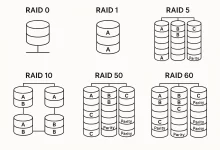

 FoxDoo Technology
FoxDoo Technology FoxDoo Technology
FoxDoo Technology